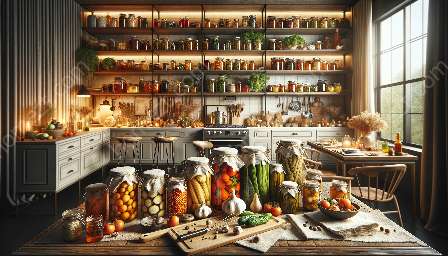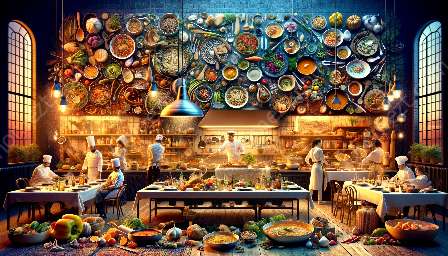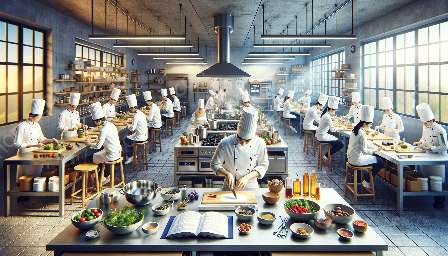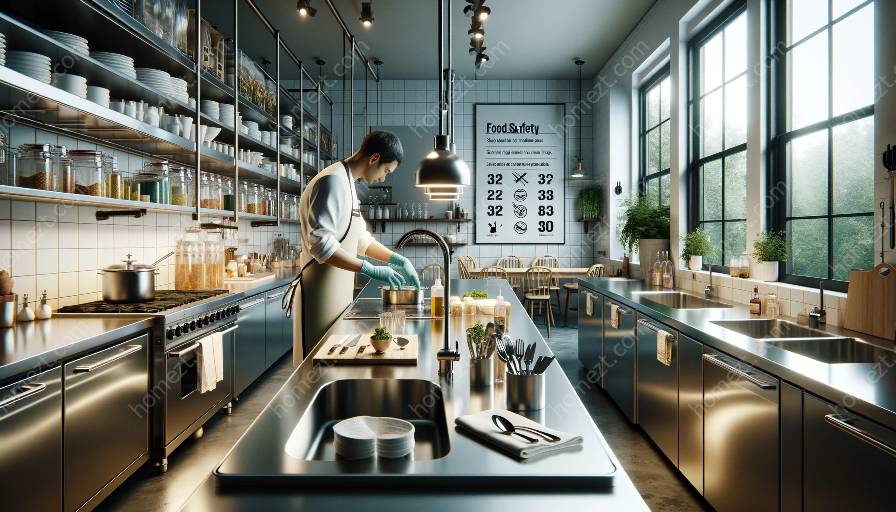Food safety and sanitation are crucial aspects of the culinary arts, ensuring that the food prepared and served is safe for consumption and free from contaminants.
The Importance of Food Safety
Food safety is of paramount importance in the culinary world. It encompasses the practices and procedures employed to ensure that food is safe to eat, minimizing the risk of foodborne illnesses and promoting overall well-being.
Hygienic Practices
Hygienic practices include proper handwashing, wearing appropriate attire such as hairnets and gloves, and maintaining cleanliness in the kitchen environment. These practices significantly reduce the risk of cross-contamination and the spread of foodborne pathogens.
Temperature Control
Proper temperature control is critical to food safety. It involves storing, cooking, and reheating food at the right temperatures to prevent the growth of harmful bacteria. Using food thermometers and refrigeration equipment helps maintain the integrity of perishable items.
Safe Food Handling
Safe food handling practices involve separating raw and cooked foods, preventing cross-contact, and properly storing leftovers. Following these practices reduces the risk of foodborne illnesses and ensures the quality and safety of the food.
Sanitation in the Kitchen
Sanitation in the kitchen involves maintaining a clean and hygienic environment to prevent contamination and ensure the safety of prepared food.
Cleaning and Disinfection
Regular cleaning and disinfection of surfaces, utensils, and equipment are essential to prevent the spread of bacteria and other pathogens. Using sanitizers and following a thorough cleaning schedule is crucial in maintaining a sanitary kitchen.
Proper Waste Management
Managing waste appropriately, including food scraps and packaging materials, is an integral part of kitchen sanitation. Proper waste disposal prevents the attraction of pests and reduces the risk of contamination.
Equipment Maintenance
Regular maintenance and cleaning of kitchen equipment, such as ovens, grills, and refrigerators, is imperative to prevent the buildup of grease, grime, and bacteria. Well-maintained equipment contributes to a clean and safe food preparation environment.
Best Practices for Food Safety and Sanitation
Adhering to best practices for food safety and sanitation is crucial for culinary professionals and anyone involved in food preparation and service.
Training and Education
Continuous training and education on food safety practices should be provided to all staff members. This ensures that everyone understands and follows proper protocols in maintaining a safe and clean kitchen environment.
Compliance with Regulations
Staying informed and compliant with local health regulations and standards is essential for culinary establishments. Adhering to these regulations helps prevent foodborne illnesses and maintains the reputation of the establishment.
Regular Inspections
Conducting regular inspections and audits of the kitchen, equipment, and sanitation practices helps identify areas for improvement and ensures adherence to proper guidelines.
Conclusion
Food safety and sanitation are foundational elements of the culinary arts and kitchen dining experience. By prioritizing these aspects, culinary professionals and food service establishments can uphold the highest standards of quality, safety, and hygiene in food preparation and delivery.


































